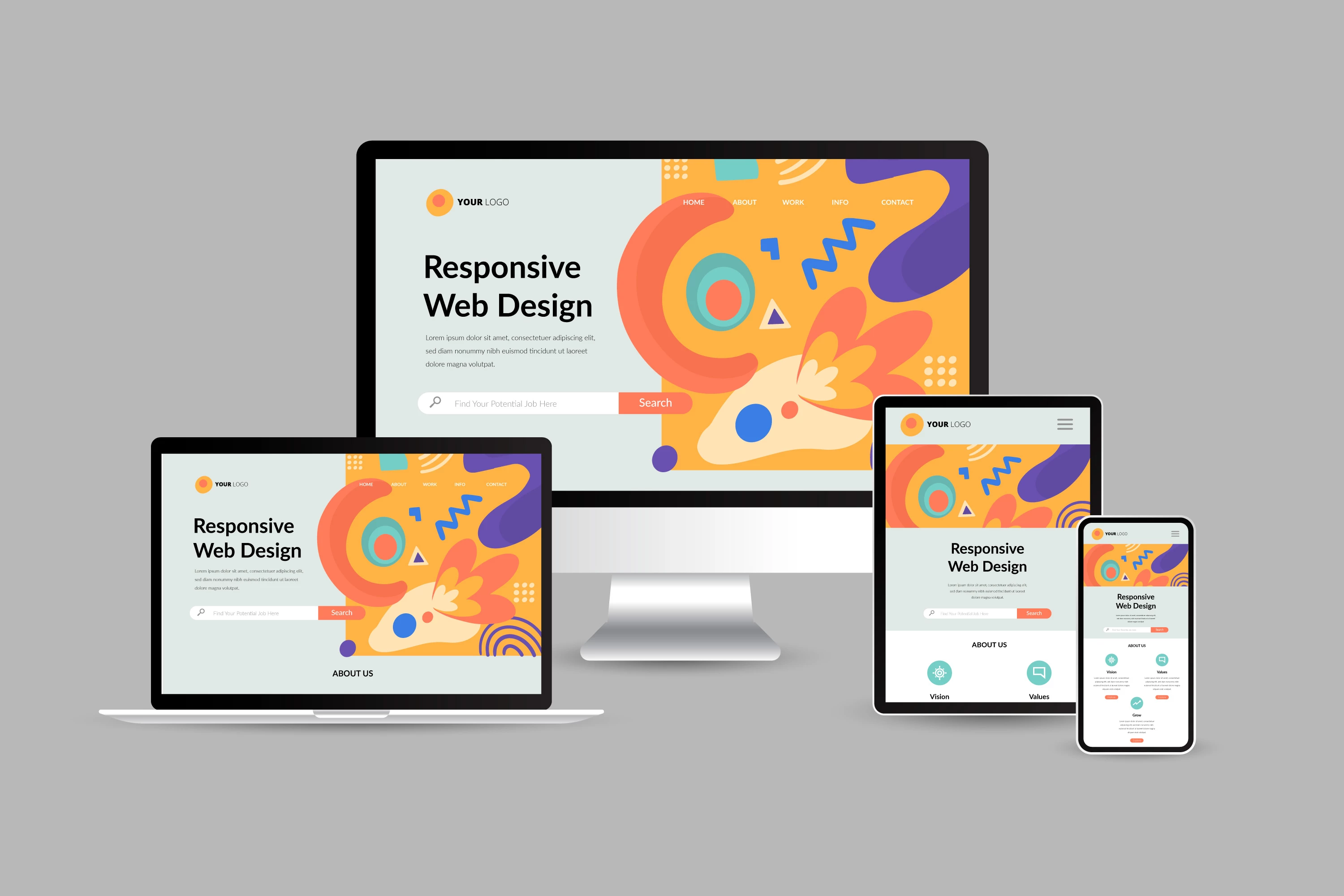Innovative Web Style Solutions for Modern and Engaging Sites
In the realm of web style, the quest of contemporary and appealing solutions has actually ended up being increasingly crucial for companies intending to capture individual attention. By integrating vibrant shade plans, interactive aspects, and responsive layouts, designers can develop experiences that not just reverberate with individuals however additionally improve brand identification.
Welcoming Strong Shade Plans
In website design, the calculated use strong color design can substantially boost user involvement and brand identification. By employing lively shades, designers can produce visually striking internet sites that record focus and foster a remarkable experience. A well-chosen color palette not only reflects a business's values yet likewise stimulates details feelings that can affect customer behavior.
Vibrant colors can be used to assist individuals' attention to vital aspects such as phone call to activity, boosting conversion prices. Making use of contrasting colors for switches and web links can make these elements stand out, motivating users to engage even more easily. In addition, a cohesive color plan throughout the website strengthens brand acknowledgment, developing a sense of familiarity and depend on amongst site visitors.
However, it is critical to stabilize bold colors with adequate white space to prevent overwhelming customers. Effective use typography additionally complements bold colors, guaranteeing readability while preserving visual allure. Ultimately, embracing strong color design in website design not only elevates visual top quality however likewise plays an important duty in achieving critical business purposes, making it a necessary consideration for contemporary web advancement.

Utilizing Interactive Components
Interactive components are vital in contemporary website design, as they dramatically enhance user interaction and develop an extra dynamic searching experience. By incorporating functions such as animations, hover effects, and clickable aspects, web sites can motivate individuals to discover web content better and return for future visits.

Micro-interactions, such as refined animations when a switch is clicked or a type is submitted, can additionally boost the customer experience by offering prompt feedback. These tiny information can make the internet site feel more responsive and active, promoting a sense of link in between customers and the site.
Moreover, gamification aspects, such as rewards for finishing specific activities, can encourage users to involve with the content extra deeply. By thoughtfully integrating these interactive components, web developers can produce an unforgettable and engaging online experience that reverberates with users and motivates them to return.
Carrying Out Receptive Style
Executing receptive style is crucial in today's multi-device landscape, guaranteeing that web sites provide an optimal viewing experience across different screen dimensions. As customers progressively access the net through smartphones, tablet computers, and desktop computers, a one-size-fits-all method is no more viable. Responsive layout permits smooth navigating and communication, adjusting layout and web content to fit the device being made use of.
Key principles of responsive design include liquid grids, adaptable images, and media questions. Liquid grids utilize loved one units, such as percentages, as opposed to taken care of pixels, enabling components to resize proportionately. Adaptable images scale within their including elements, protecting against overflow and keeping visual integrity. Media queries help with Visit Website the application of different styles based upon the tool's features, such as size, height, or resolution, enabling designers to tailor the individual experience effectively.
In addition, responsive design improves search engine optimization efficiency, as online search engine prefer mobile-friendly sites. By executing responsive layout, companies not just enhance individual contentment and interaction but additionally raise their reach click here to find out more in a competitive electronic landscape. As innovation remains to develop, adopting receptive style has actually ended up being a fundamental technique for any modern and engaging web site.
Incorporating Multimedia Web Content
Multimedia content plays an essential role in creating engaging and vibrant internet experiences that capture customers' attention and enhance understanding. By incorporating message, photos, audio, and video, web sites can supply a richer story that charms to various learning styles and preferences. This assimilation not only strengthens user engagement however likewise help in sharing intricate concepts succinctly.
Incorporating top notch pictures and infographics can separate textual web content, making it more absorbable. Video clip tutorials and presentations can supply extensive understandings that fixed material may not fully communicate. Audio elements, such as podcasts or history songs, can likewise improve the ambience of a web site, producing a much more immersive experience.
Additionally, the strategic use multimedia can enhance search engine optimization efficiency, as online search engine favor varied material kinds, enhancing exposure. It is crucial use this link to ensure that multimedia elements do not impede web page tons times, as this can lead to customer aggravation. By stabilizing multimedia assimilation with efficiency considerations, web developers can develop visually appealing and practical websites that reverberate with individuals, fostering a much deeper connection and encouraging return check outs.
Focusing On Individual Experience

To accomplish an ideal customer experience, developers should concentrate on several crucial concepts. Responsive design is essential; web sites must adjust seamlessly to different devices and screen dimensions. This availability ensures that users can engage with content no matter their picked platform. Second of all, clearness in format and hierarchy is critical. Clear telephone calls to action, readable typography, and arranged content guide individuals, lowering cognitive lots.
Inevitably, prioritizing UX not just raises individual contentment yet additionally drives engagement and conversion rates, making it an essential element of modern-day web style strategies. By positioning individuals at the facility of layout efforts, web sites can produce enduring, positive impressions that urge return check outs.
Verdict
To conclude, modern-day web style solutions that emphasize bold color systems, interactive aspects, responsive style, and multimedia content dramatically boost user involvement and satisfaction. Focusing on customer experience through clear layouts and continuous responses better adds to improved conversion rates. By adopting these methods, web sites can efficiently astound site visitors and enhance brand name identification, inevitably causing an extra vibrant and appealing on-line visibility. The assimilation of these design principles is essential for attaining modern-day web layout purposes.